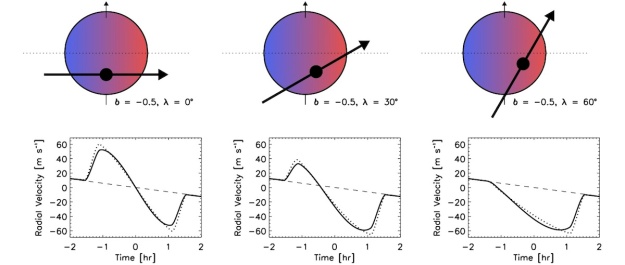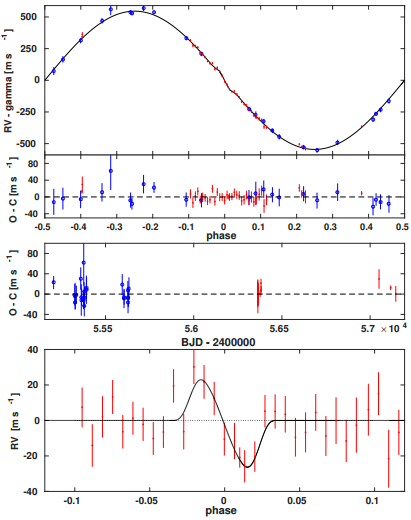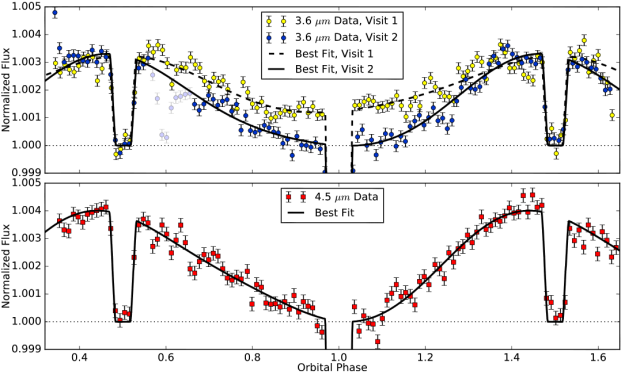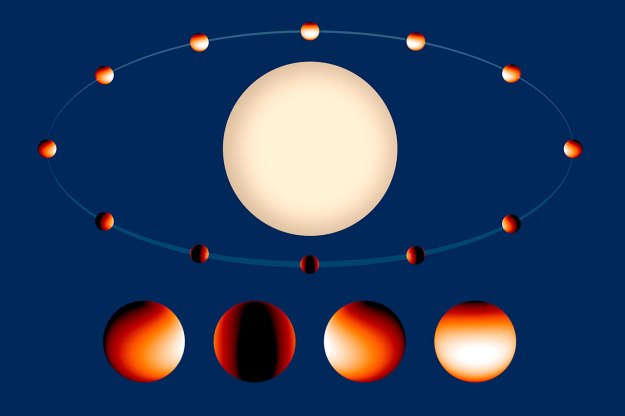Since hot-Jupiter planets have close-in orbits they will raise a tidal bulge on their host star. Since the planet’s orbit is faster than the star’s rotation, that bulge will tend to lag behind the planet. Its gravity will thus pull back the planet slightly, draining angular momentum from the planet’s orbit.
Hot Jupiters, especially the shortest-period ones, are thus expected to be gradually spiralling inwards, and many will eventually spiral into their star. An important issue is how fast this happens. We can obtain theoretical estimates, but it would be good to have a direct measurement of the decay. Thus the transits of the shortest-period hot Jupiters are being monitored to see whether their orbital period is decreasing.
Ing-Guey Jiang et al have just produced a paper based on new transit observations of WASP-43b, an ultra-short-period hot Jupiter which orbits in 0.81 days. They arrive at this plot:

The x-axis is time, in a count of transits, while the y-axis is the “observed minus calculated” time of transits, being the observed deviation of a transit timing from the expected time. The data points are the transit timings by Jiang et al and from previous papers.
A constant orbital period would correspond to the dotted line. A very fast period change (as has been previously suggested) would correspond to the dashed curve, and Jiang et al now rule that out. Their best fit is the solid curved line, which has a slower rate of change, but still seems to suggest a changing orbital period.
This is interesting work, and if it really does reveal a period change in WASP-43b then it is highly important. My feeling is to be cautious for now. It is clear from the plot that there is scatter in the transit timings that is larger than the error bars, and we don’t really know what short-term or medium-term “noise” there might be in exoplanet transit timings, since we’re only beginning to study them.
The period change suggested by Jiang et al corresponds to a tidal decay rate specified by the number Q = 105 (where “Q” is the tidal “quality factor” that depends on how much energy is dissipated in the tidal bulge on the star during each orbit). However, it is generally considered that the Q values are more likely to be 107 for hot Jupiters (see here), which would produce a much slower orbital decay.
Thus, the period change in the above figure could be a short-timescale fluctuation (for ill-understood reasons) rather than the true long-term orbital-period decay. The fact that, by adding more timings, Jiang et al have reduced the previous estimate for the period change by an order of magnitude suggests that the same might happen given future timings. Still, this is important work, and it will be interesting to see how it progresses.
















